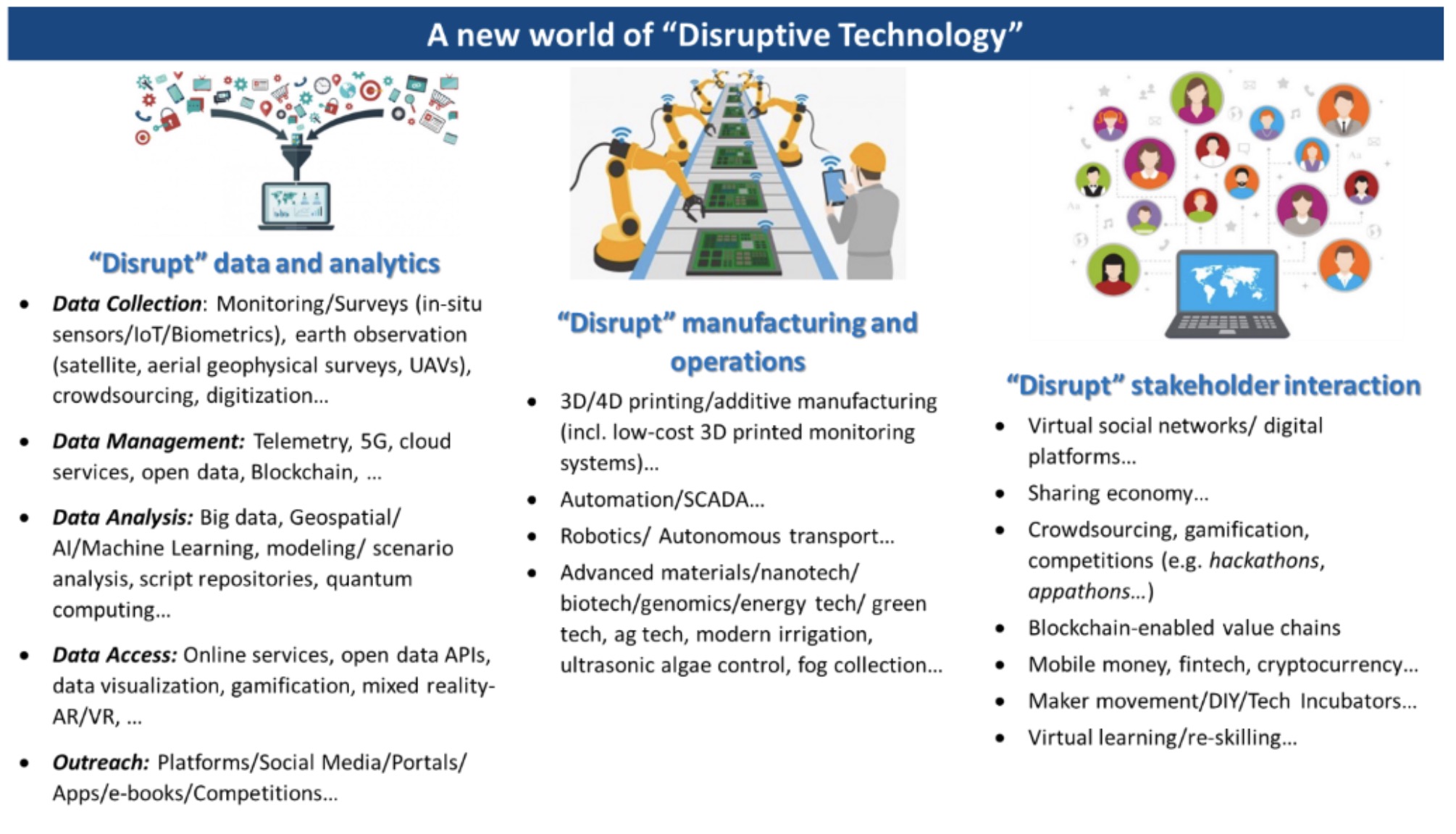Effectively addressing environmental challenges relating to pollution and sustainable natural resource management under a changing climate are central to sustainable development. Globally, air pollution is estimated to result in 8 million deaths annually. About 80 percent of the wastewater generated globally flows back into the ecosystem without being treated or reused. Over half the tropical rainforests have been destroyed since the 1960s. Globally, about 24 billion tons of fertile topsoil is lost every year after it takes about 500 years to form an inch of topsoil! The planet has lost 40% of its species (between 1970 and 2000) and a million plant and animal species are near extinction. About 70 percent of the world’s poor live in rural areas and depend on biodiversity for their survival and well-being. An estimated 8 m tons of plastic waste enters the world’s oceans each year. The impact of extreme natural disasters is equivalent to about a US $520 billion loss in annual consumption and forces about 26 m people into poverty annually. Global emissions of CO2 have doubled since 1990, and with each degree temperature increase, grain yields are expected to decline by 5 percent.
Typology of GreenTech Action: These include challenges related to the achievement of a Clean Environment (e.g. air, water, and land pollution), a Green Environment (e.g. management of forests, landscapes/watersheds, and biodiversity), Blue Economy (e.g. fisheries/aquaculture, coastal zone management, marine/ocean health), and increasingly, more Integrated Approaches (e.g. Climate Resilience, Circular Economy, Environmental Economics/Policies/Institutions, Environmental Risk Management).
Modern technologies are “disrupting” traditional ways of addressing these persistent and evolving problems related to pollution and natural resources management. There are experiences from all over the world on showcasing use of innovative approaches for “GreenTech” – these can help improve the way we invest in green, blue economy, and clean operations to address these challenges.
Disruptive Technology – At a Glance·
- About 90% of the data in the world today (about 2.5 quintillion bytes daily!) has been created in the last two years! It is expected that the big data for analysis could grow to 5.2 zettabytes by 2025.
- About 40% of productivity improvements are expected to be driven by Artificial Intelligence (AI) by 2035, with the potential to raise global GDP by US$ 13 trillion by 2030. Deep learning alone could account for US$ 3.5-5.8 trillion in annual value.
- About half the world’s population has access to the internet, although over 71.8% of Africa’s population does not. About 5 billion people in the world own a mobile device, and 2.65 billion use social media.
Typology of Disruptive Technology: These disruptive technologies can be classified into many types – the approach used in this ebook is to classify them as those related to data and analytics; manufacturing and operations; and stakeholder interaction.

If you would like a deeper-dive into the world of “disruptive” technologies, please do explore a companion e-book on Disruptive Tech – especially check out the technology application explorer .
Technology has the both the power to generate tremendous benefits by helping countries leapfrogging traditional development paths (e.g. as innovations like mobile phones and smartphones are demonstrating). However, they also bring significant risks (e.g. poor access due to the digital divide, privacy, cybersecurity, traditional job losses) that need to be managed effectively by improving awareness, institutions, policies, governance, re-skilling, and enabling investments (e.g. in electricity, telecommunications/broadband). This is especially critical in the developing world to help them effectively harness technologies to maximize their development benefits and minimize risks.
Korea is a powerful example of how to achieve economic development by utilizing innovative technology. Korea was a country which had a low-skilled and labor-intensive economy, and successfully transformed into a highly skilled and knowledge/technology-intensive economy by investing in human capital and research and development of technologies.
Green Technologies are environmentally sound technologies, defined in Agenda 21 as those that “protect the environment, are less polluting, use all resources in a more sustainable manner, recycle more of their wastes and products, and handle residual waste in a more acceptable manner than the technologies for which they were substitutes.” As this definition implies, these are forever changing given that newer technologies will always seek to be better than older ones. There are few collations of this rapidly-changing world (some collations from organizations like WIPO offer useful collations in topics like pollution are useful), and this eBook is one example of providing a few examples in this context that are presented in an innovative interactive manner.
Often, there could be a combination of technologies that could be used to solve one or many of these pollution challenges. For example, integrated information systems developed with the help of earth observation, in-situ sensors, and surveys could be used to provide synoptic views of pollution or even more integrated environmental data and analytics (that are covered in a later chapter on Integrated Approaches).
Korea has grown to be a global leader who shares its expertise and technologies, with developing countries. Under the Green Growth Initiative in 2009 , Korea has actively pursued the development of green innovation and technologies and recently with its COVID-19 response. There are many institutions including public, private sector and academia which expertise and experience in innovation and technology. Some of these institutions already have strong partnerships with the Bank and work in developing countries to share innovative solutions for their sustainable development, within the clean, green and blue economies.
